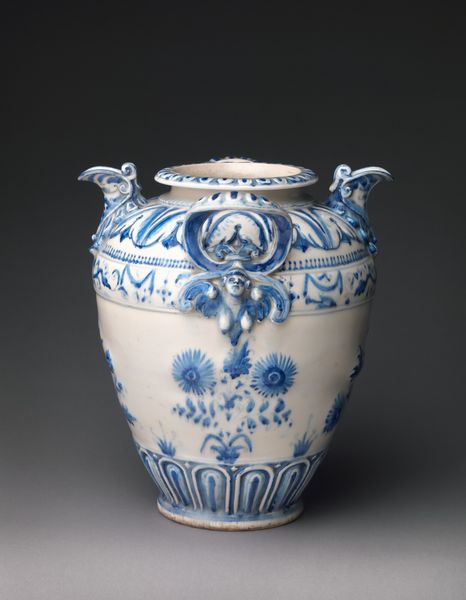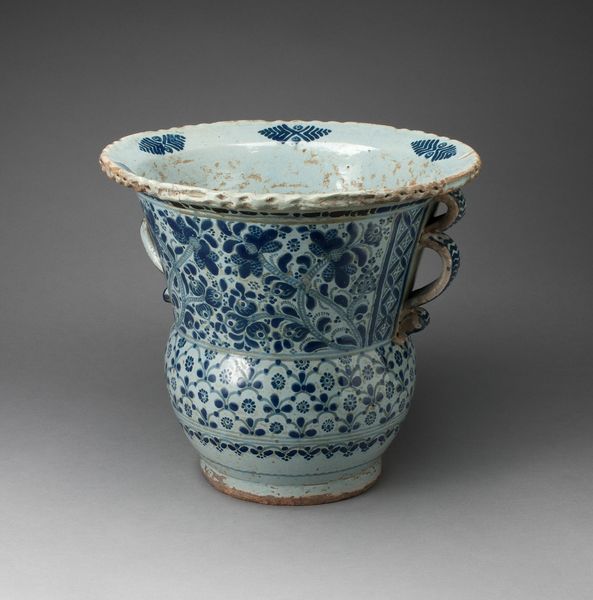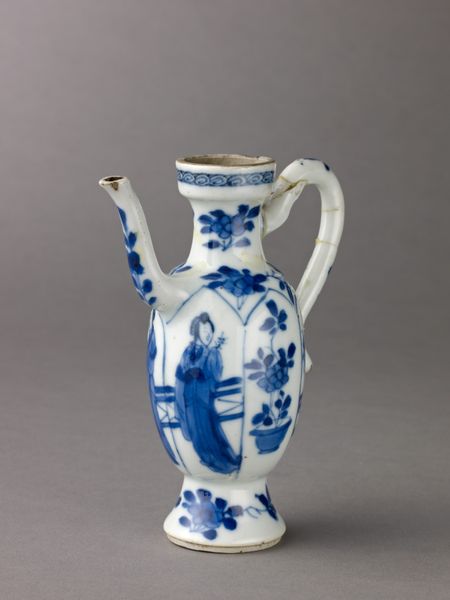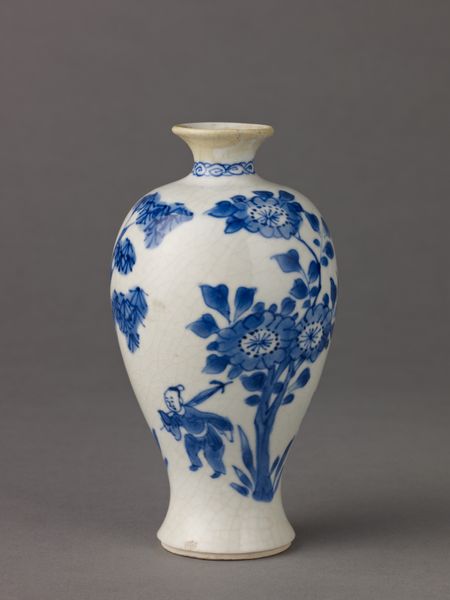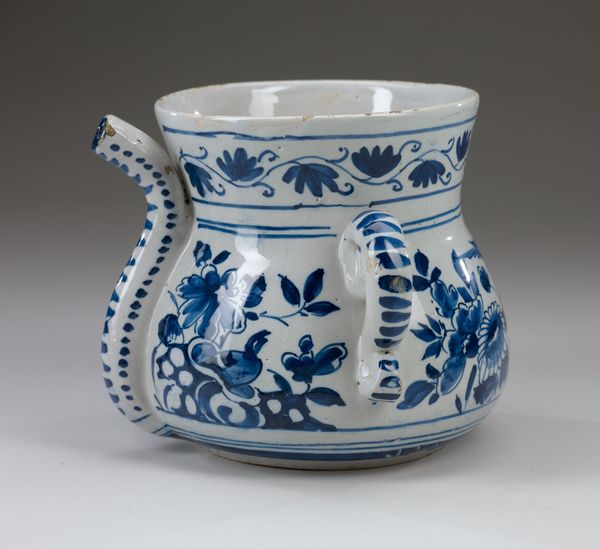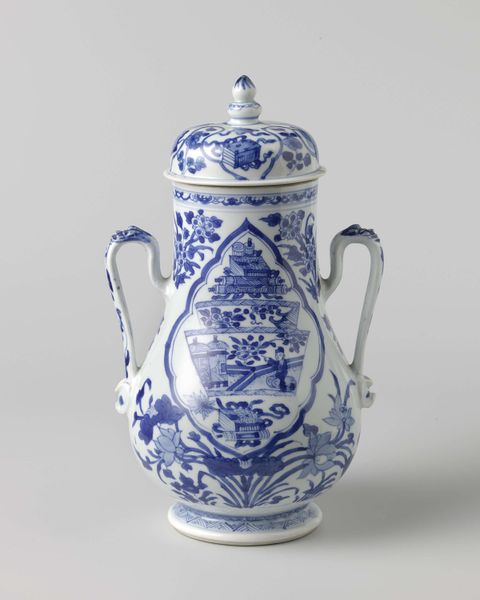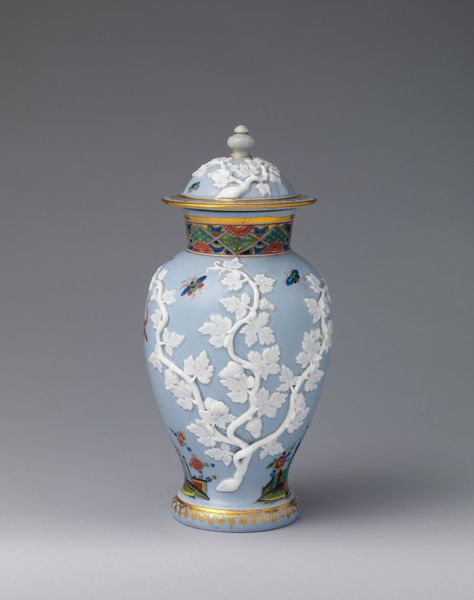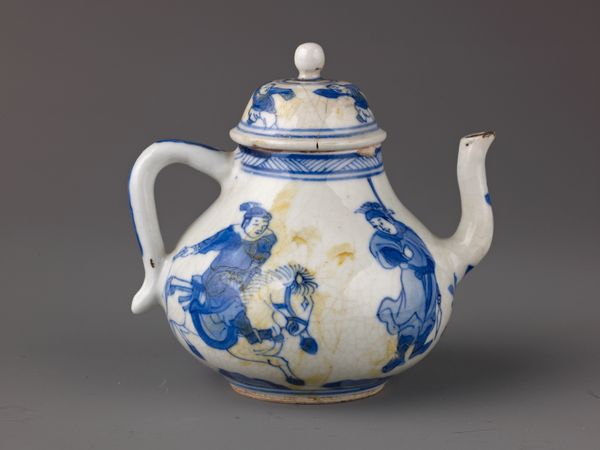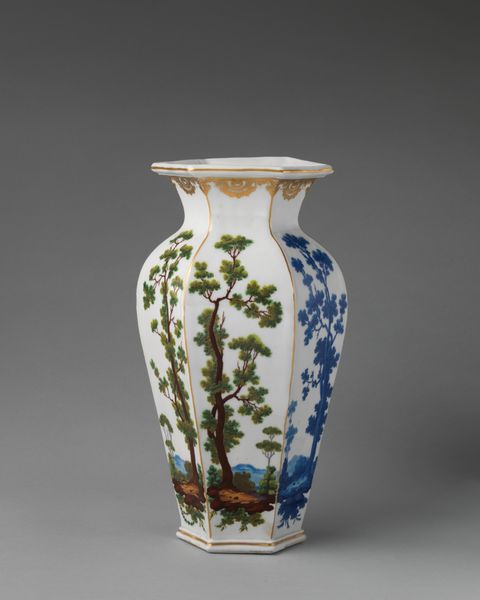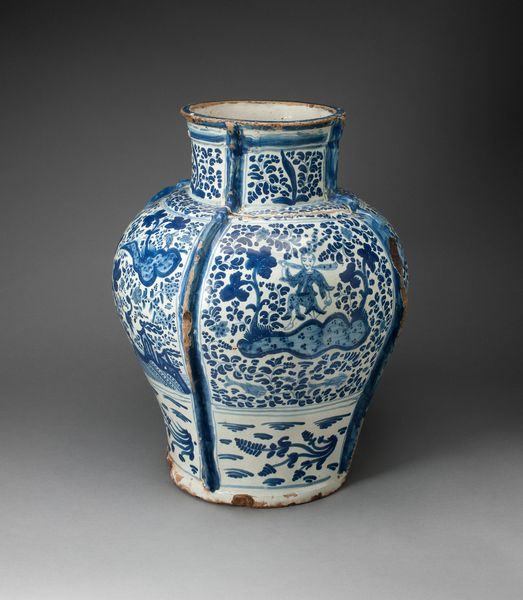
ceramic, sculpture
#
ceramic
#
11_renaissance
#
sculpture
#
ceramic
#
decorative-art
#
italian-renaissance
Dimensions: Height: 9 1/8 in. (23.2 cm)
Copyright: Public Domain
Curator: This charming piece is a jug, or "chevrette," crafted by Masséot Abaquesne sometime between 1540 and 1550. It's a beautiful example of Renaissance ceramic work currently held here at the Metropolitan Museum of Art. Editor: My first impression is that it's delightfully ornate, almost overflowing with playful details. The colors are vibrant, the cobalt blue contrasting so well against the creamy white background. I wonder, what was it actually used for? Curator: Likely for serving wine or water at the table. Imagine its presence elevating an aristocratic dining experience. Beyond its function, the imagery also communicates status and knowledge. Editor: You're right. The foliage designs, even the ribbons…there’s definitely symbolic communication going on. How does the artistic style speak to its era? Curator: It embodies the Italian Renaissance aesthetic, reinterpreting classical forms through a lens of decorative exuberance. The painted frieze of stylized leaves evokes a connection to nature but contained and tamed. The prominent figures within wreaths hint at celebrated individuals and honor those images to our current time through the process of creation and art making. Editor: So it's not just a pretty object; it’s also conveying specific ideas. It speaks to a humanist worldview where people want not just function in objects but also messages. Does the vessel style have connections to other vessels of that era, from Rome, say, or the east? Curator: Absolutely. Ceramic traditions in the Renaissance were deeply intertwined with cross-cultural influences, adapting classical Greek and Roman vessel forms, incorporating motifs seen across the Mediterranean and Near East due to trade. Renaissance artists and craftsmen constantly re-imagined and contextualized styles and forms from the past, as a signal of prestige and sophisticated aesthetic. Editor: Thinking about that social signalling—how this jug presented messages about its owner’s refined taste, it reminds me how important art continues to be as an emblem of power and prestige. Even today, that symbolic weight persists, and we keep projecting our culture into crafted art. Curator: Exactly. And viewing it here, now, centuries later, it reflects enduring human desire for beauty and meaning in even our most functional objects.
Comments
No comments
Be the first to comment and join the conversation on the ultimate creative platform.
